Nicaragua
Central Standard Time (CST), UTC−6 year-round
No daylight saving time observed
Sunrise ~05:30–06:00, sunset ~17:30–18:00
Nicaraguan Córdoba (NIO), symbol “C$”
US dollar (USD) widely accepted, especially in tourist areas
ATMs available in major cities; credit cards accepted at larger establishments
Tipping customary 10% in restaurants and for guides
September 15 – Independence Day (from Spain, 1821)
Celebrated with parades, patriotic ceremonies, and cultural events
Visa-Free Countries
Visa on Arrival Countries
E-Visa Countries
Visa Required Countries
Culture
Nicaragua’s culture is a rich blend of Indigenous, Spanish colonial, and African influences that shape its music, dance, art, and cuisine. Spanish is the official language, but several Indigenous languages are still spoken in rural areas. Traditional music styles include marimba, polka, and punta, accompanied by folkloric dances that celebrate the country’s diverse heritage. Literature and poetry are highly valued, with authors such as Rubén Darío recognized internationally. The cuisine features staples like gallo pinto (rice and beans), nacatamales (corn dough with meat), and fresh seafood, highlighting the country’s agricultural richness and coastal geography. Religious festivals blend Catholic traditions with local customs, and colorful crafts like pottery, wood carving, and woven textiles thrive in artisan communities.
- Music & Dance: Marimba orchestras, folk dances, and traditional festivals showcasing Mestizo and Indigenous heritage.
- Language & Identity: Spanish official language; Indigenous languages include Miskito, Sumo, and Rama in specific regions.
- Crafts & Art: Pottery, ceramics, wooden masks, and woven fabrics produced by Indigenous and Mestizo artisans.
- Cuisine: Gallo pinto, nacatamales, quesillo cheese, and seafood dishes such as grilled fish and ceviche.
- Religion & Customs: Predominantly Catholic with indigenous influences visible in festivals and religious celebrations.
Tourism & Best Sites to Visit
Nicaragua offers diverse natural beauty and cultural heritage, from colonial cities and volcanoes to pristine lakes and tropical beaches. The country is known for eco-tourism and adventure travel, with opportunities for hiking, surfing, and wildlife viewing. Visitors explore vibrant markets, historical landmarks, and volcanic landscapes, enjoying authentic Nicaraguan hospitality.
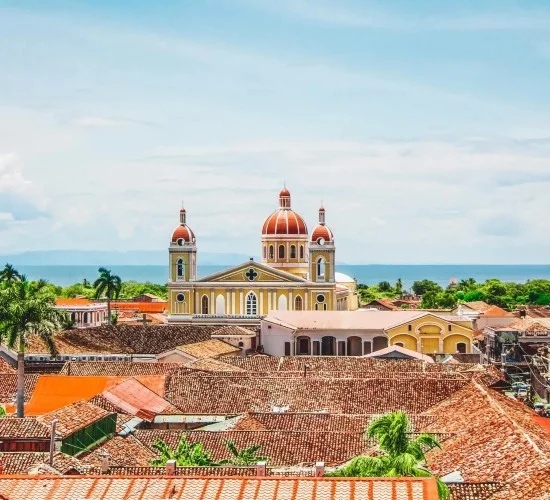
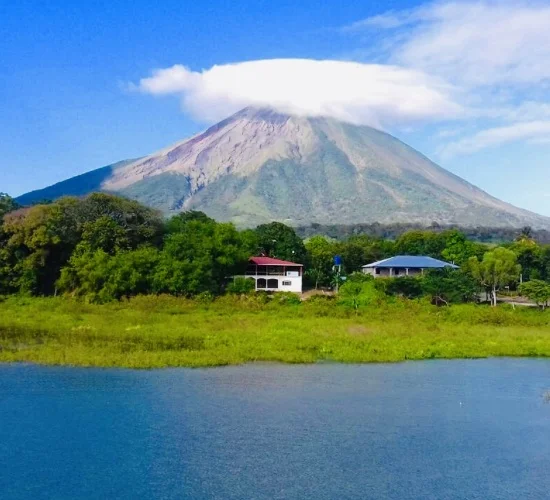
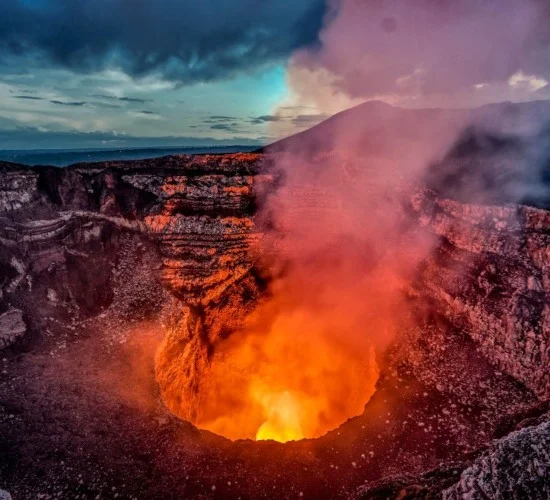
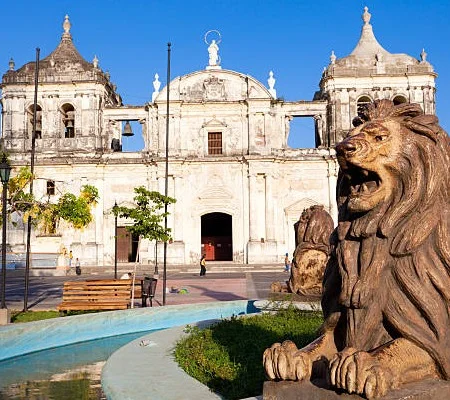
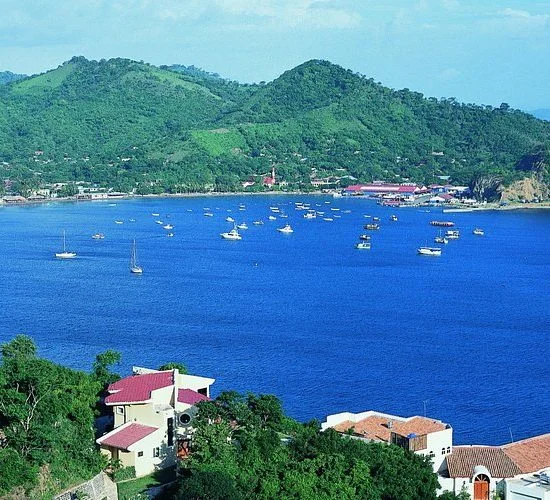
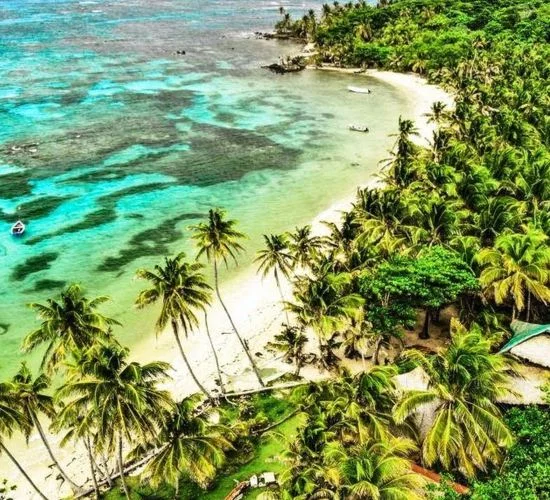
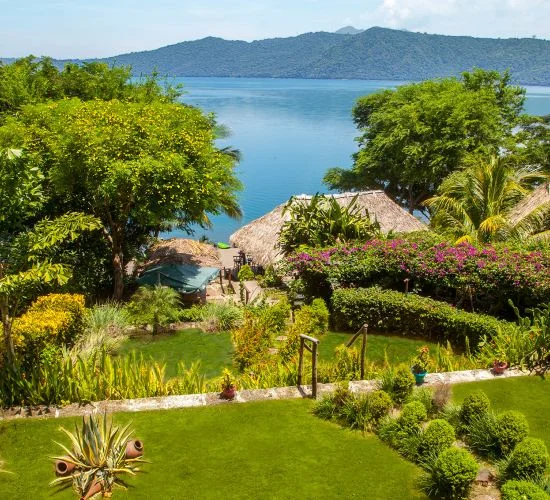
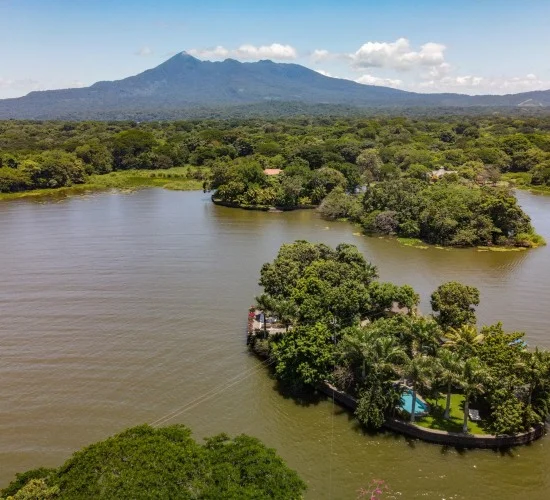
-
Granada
Known as the “Granada La Gran Sultana,” this colonial city is famed for its colorful Spanish architecture, cobblestone streets, and vibrant culture. Founded in 1524, Granada is one of the oldest cities in the Americas. Visitors stroll past brightly painted churches, visit bustling markets, and enjoy lakeside views of the nearby islets. The city offers lively cafes and museums that celebrate Nicaraguan history and arts. -
Ometepe Island
Formed by two volcanoes rising from Lake Nicaragua, Ometepe is a natural wonder with hiking trails, waterfalls, and archaeological sites. The island’s biodiversity includes monkeys, birds, and orchids. Visitors can explore petroglyphs, kayak on freshwater lagoons, or relax on volcanic beaches. The island’s local communities offer cultural experiences and eco-tourism opportunities. -
Masaya Volcano National Park
Just outside Masaya city, this park features an active volcano with a constantly glowing lava lake visible from the crater rim. Trails lead visitors around volcanic formations and viewpoints. At night, the fiery glow creates a dramatic spectacle. The nearby town of Masaya is known for its artisan markets selling handwoven hammocks, pottery, and leather goods. -
León
León is a cultural and intellectual hub with colonial churches, a majestic cathedral, and vibrant murals. The city is known for its revolutionary history and lively festivals. Visitors can explore nearby volcanic slopes or take volcano boarding excursions. León’s culinary scene features traditional Nicaraguan dishes and fresh coffee. -
San Juan del Sur
This Pacific coastal town is popular for its surfing beaches, lively nightlife, and fishing village charm. Surrounded by hills and bays, San Juan del Sur attracts backpackers and luxury travelers alike. Boat tours offer dolphin watching and trips to nearby secluded beaches. -
Corn Islands
Located off the Caribbean coast, the Corn Islands provide an idyllic tropical escape with white sandy beaches, coral reefs, and a laid-back atmosphere. Known for excellent snorkeling and diving, the islands offer a rich Afro-Caribbean culture, fresh seafood, and rustic accommodations. -
Lake Apoyo
A volcanic crater lake near Managua, Lake Apoyo is a popular spot for swimming, kayaking, and hiking around its rim. The clear, warm waters attract locals and tourists seeking natural beauty and peaceful retreats. Small resorts and eco-lodges line the shore. -
Islets of Granada
Scattered across Lake Nicaragua near Granada, these small islands offer boat tours through mangroves and wildlife watching. Visitors see exotic birds, monkeys, and enjoy picnics on secluded beaches. The islets provide a peaceful escape from the bustling city.
Transportation
Nicaragua’s transportation options include buses, taxis, domestic flights, and boat services connecting its mainland and coastal regions. Intercity travel is dominated by “chicken buses” (colorful repurposed school buses) offering an authentic local experience. Larger cities have taxis and ride-hailing apps, though rural areas rely on shared taxis and minibuses. Domestic flights link Managua with Bluefields, Corn Islands, and other regional airports. Boat transportation services operate mainly along the Caribbean coast and between islands. Road infrastructure varies, with paved highways connecting major cities but secondary roads often unpaved and challenging during the rainy season.
- Chicken Buses: Inexpensive and frequent, these buses provide extensive coverage on main routes and rural areas but may be crowded.
- Taxis & Ride-hailing: Available in urban centers; negotiate fares in advance if meters are not used.
- Domestic Flights: Airlines such as La Costeña connect Managua with Caribbean coast and islands.
- Boat Services: Connect coastal communities and Corn Islands; schedules can vary seasonally.
- Car Rentals: Available mainly in Managua and tourist centers; recommended for flexible exploration.
Airports
Nicaragua’s main airport is Augusto C. Sandino International Airport near Managua, serving international flights primarily to the United States, Central America, and Mexico. Several regional airports and airstrips provide domestic connections, especially to Caribbean coastal communities.
- Augusto C. Sandino International Airport (MGA): Located 11 km from Managua, this is the primary international gateway with modern facilities and flights to North America, Central America, and Mexico.
- Bluefields Airport (BEF): Serving the Caribbean coast, with domestic flights connecting to Managua and regional hubs.
- Corn Island Airport (RNI): Located on Big Corn Island, serving regional domestic flights mainly to Bluefields and Managua.
- Puerto Cabezas Airport (PUZ): Serving the northern Caribbean coast with regional connections.
Visa & Travel
| Nationality/Region | Entry Status | Max Stay | Key Requirements |
|---|---|---|---|
| USA, Canada, EU, CARICOM | Visa Free | Up to 90 days | Valid passport (≥6 months), return/onward ticket, proof of funds |
| Other countries | Visa Required | Varies | Apply at Nicaraguan embassy; may require invitation letter, proof of accommodation |
| Transit (all nationalities) | Transit Allowed | Up to 24 hours | Confirmed onward ticket |
Health: Yellow fever vaccination required if arriving from endemic countries. Recommended vaccines include hepatitis A and B, typhoid, and routine immunizations. Mosquito bite prevention advised due to dengue and chikungunya presence.
Customs: Duty-free allowances include 200 cigarettes or 50 cigars, 1 liter of spirits, and gifts up to USD $500. Restrictions apply to plants, animals, and food products.
Safety Tips: Exercise caution in Managua and border areas; avoid isolated places at night. Follow local advice and travel with reputable guides in rural zones.
Money Matters: Nicaraguan Córdoba is official currency, but US dollars are widely accepted. ATMs and credit cards available in cities; carry cash in rural areas.
Etiquette: Greetings with “Buenos días” or “Buenas tardes” are appreciated. Respect local customs and traditions, especially in Indigenous areas. Always ask before photographing people or events.
- Asia
- Singapore
- Japan
- South Korea
- Africa
- Seychelles
- Mauritius
- South Africa
- Contact:
- Address: Eighth Avenue Place, East Tower, 525 8 Avenue SW Suite 3200 Calgary, Alberta T2P 1G.
- Email: Info@theazmip.com
- Number: +12812363495
Travel the World Without the Burden of Visa Applications, as TheAzmip.com Connects You to the Best Visa-Free Destinations.
- North America
- United States
- Canada
- Mexico
- Oceania
- Australia
- New Zealand
- Samoa

